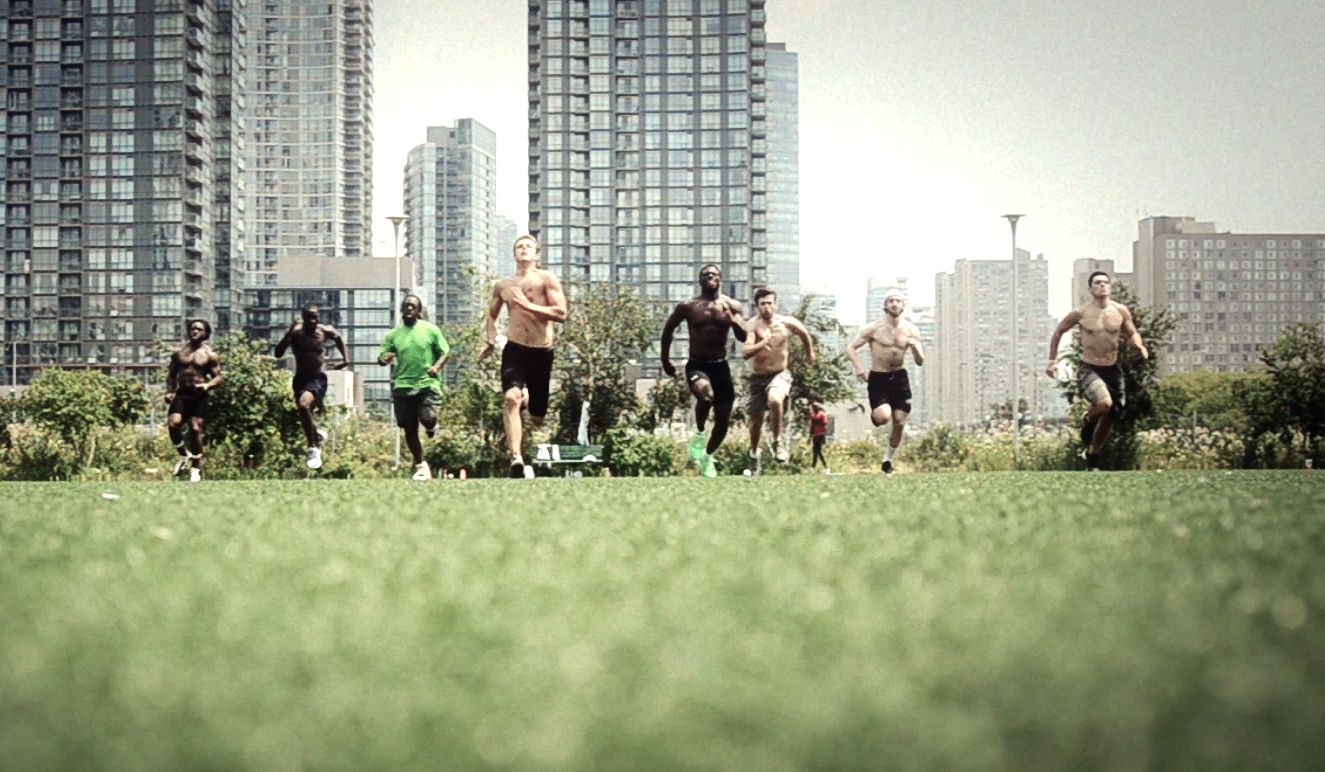So many athletes get sucked into the trap of training for “foot speed” and end up wasting valuable time and energy. For example, some trainers will have their athletes learn a series of footwork patterns, perform it through an agility ladder, and gradually have them increase the speed of the pattern.
This is one example of a broader type of training termed SAQ, or Speed-Agility-Quickness, training.
In my experience, these types of drills are great at doing one thing: teaching you how to do SAQ drills.
These drills will be beneficial if you’re planning to do the Samba as a touchdown celebration, but they won’t do anything to help you dodge linebackers to make it to the end zone in the first place.

To clarify, SAQ drills are NOT the same as traditional methods to increase speed. You would be hard pressed to find footage of legendary track and field strength coach Charlie Francis having his sprinters do an “icky shuffle” to develop their speed. If you practice really hard at a 5-cone shuffle drill, you’ll likely only get better at doing the shuffle from cone to cone instead of becoming faster with the puck.
A lot of SAQ drills focus on increasing foot speed and maximizing the amount of contacts that you make with the ground. More touches and faster feet means you’ll cover the distance faster, right? Wrong.
Athletes please stop doing all these crazy drills that don’t apply to your game. A trainer or coach should be able to show u how this translates to your game. If he or she can’t stop the madness now. I’m tired of folks robbing y’all & with fancy drills that don’t translate. TRUTH
— Deion Sanders (@DeionSanders) May 29, 2020
Here’s some homework for you: find an open space and put an object about 25 meters away. Run to the object and touch the ground AS MANY TIMES AS YOU CAN and AS FAST AS YOU CAN taking short, choppy steps. Aim for about 50 touches. Time yourself. Now, do it again and touch the ground AS LITTLE AS POSSIBLE with long and powerful strides. Aim for about 10 touches. Which way is faster?
So it would seem that SAQ drills are not just a waste of energy to use up some time in your sessions, but they are also training you to move INCORRECTLY! As a strength coach, the only thing worse than NO RESULTS is making your athlete WORSE OFF THAN WHEN THEY STARTED.
Teaching incorrect movement patterns is very detrimental to an athlete’s game-time performance, and in extreme cases of movement dysfunction, this can lead to a greater risk of injury (but don‘t just take my word for it, check out what physiotherapist Gray Cook says about movement dysfunction).
There are better ways to improve your speed, agility, and quickness, and to learn how to do that, it is important to understand what each of these terms means.
Speed is how fast your body can move; it’s your top speed.
When you see a forward streaking down the wing with the puck, or a wide receiver going all the way, that is where you use your top speed.
Agility is the ability to change directions as fast as possible. We see agility when Kobe zigzags in between opponents on the court, or when a soccer player can stop and go to fake out the defender.
Finally, quickness is the ability to generate a faster and more powerful first step than the other guy. We see it when a linebacker lunges through the line and sacks the quarterback with lightning speed, or when a baseball player gets an explosive start as he steals second base.
I talk about the influence of different types of strength in the post Strength is the Foundation. In a nutshell, SAQ training SHOULD be all about developing Maximum Strength and low-load speed strength for speed; developing Reactive Strength will emphasize your Stretch Shortening Cycle (SSC) for better agility: and Explosive Strength will focus on the quickness of your first few steps, which ultimately determines who gets there first.
However, many so-called professionals will market their cone and ladder drills as the best ways to improve your performance.
Do your research and make sure you don’t fall into an expensive trap that could end up costing you more than a few extra bucks.
Train hard, and focus on the movements that count. Leave the fast feet for the salsa club and do what works best in the gym. Stay strong.
About the Author: Clance Laylor
Related Articles


